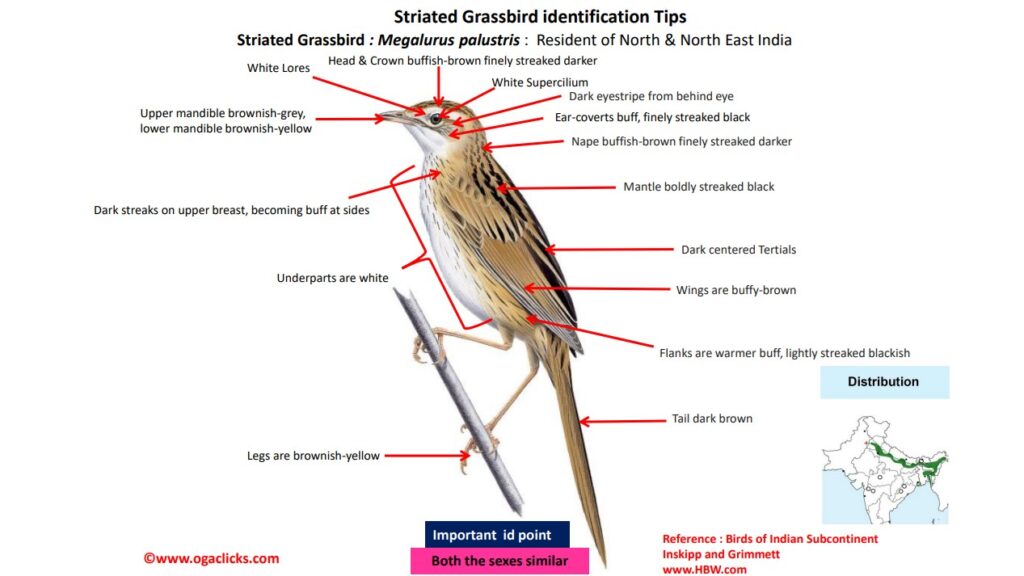Striated Grassbird

Striated Grassbird Megalurus palustris
Etymology:
- Megalurus : Greek word megalos –great; ouros -tailed.
- Palustris : Latin word for Marsh derived from paludis – swamp, marsh
Vernacular names: Hindi: Takko, Jal-aggin, Pun: Waddidharidarpiddi, Ass: Nul chaypee
Distribution in India: Resident across low lands of Central & North East India.
Description: Size of 22-25 cm. A large and conspicuous warbler with long graduated tail, retrices tapered to tips. It has whitish Supercilium diffusing at rear, somewhat highlighted by dark eye stripe from behind eye, pale lore and ear-coverts, latter lightly streaked darker; plumage otherwise buffish-brown overall, crown and nape finely streaked darker, but appearing relatively plain compared with strong dark brown streaking of mantle, scapulars and upper tail-coverts (rump usually unstreaked); wings buffish-brown, upper wing-coverts and, especially, tertials with blackish centers; tail brown, darker towards feather shafts, with paler fringes on outer webs; chin, throat, breast and belly whitish, some dark streaks on upper breast, becoming buff at sides, with flanks and under tail-coverts warmer buff, lightly streaked blackish, streaking particularly bold on under tail-coverts (in fresh plumage, streaking on underparts somewhat concealed owing to wider feather fringes, but becomes very evident when feathers abraded); iris light brownish-yellow to brown; upper mandible brownish-grey, lower mandible brownish-yellow; legs brownish-yellow. Both the sexes aresimilar in plumage, male is larger than female. The juvenile is similar to adult, but underparts are washed yellow, flanks and upperparts are quite warm brown, legs are brighter fleshy-pink. The race toklao (Central & North East India) has more pronounced streaking on crown, breast and flanks and less buff tone below than nominate.
Habitat: It is found in open marshland and wet grassland, with stands of reeds, reed mace and similar tall vegetation and along margins of cultivation
Food Habits: It eats small invertebrates, chiefly insects and their larvae, and small spiders, also eats flower nectar. Usually singly. Forages among reeds or tall grasses, threading its way with ease as it climbs through the vegetation
Breeding Habits: They breed in April-July. Sings from near tops of tall reeds and also in aerial display, when it rises 30 m into air, singing and soaring, before descending in parachute glide on outstretched wings. The nest is a ball with side entrance, constructed from coarse grasses, lined with finer grasses, placed low in grass clump or tussock, often over wet ground .It lays a clutch of 4 – 5 eggs.